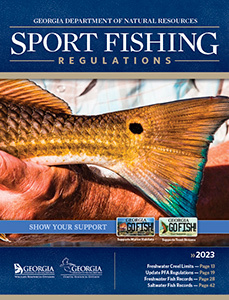Freshwater Fish Identification
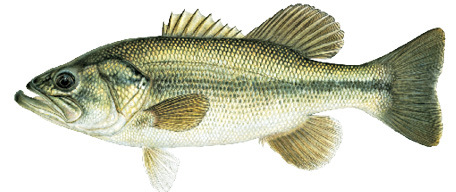
Largemouth Bass
- Upper jaw extends beyond eye
- Spiny and soft dorsal fin separate or nearly so
- Tongue normally smooth, tooth patch rare
- World Record 22 lb. 4 oz.
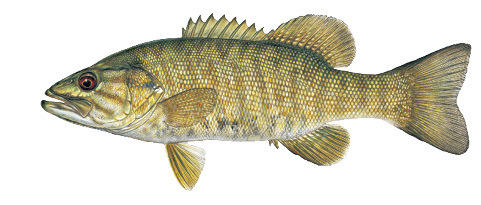
Smallmouth Bass
- Upper jaw extends to about middle of eye
- Usually has vertical stripes along body
- 3 short spines on anal fin
- State Record 7 lb. 2 oz.
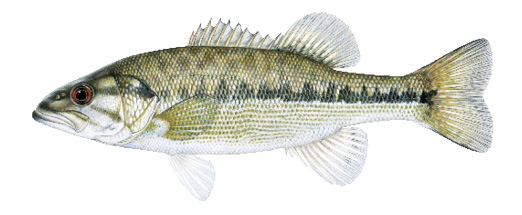
Spotted Bass
- Upper jaw not past rear of eye
- Spiny and soft dorsal fin clearly connected
- Tooth patch on tongue
- State Record 8 lb. 2 oz.
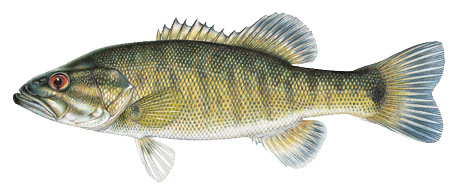
Shoal Bass
- Found in Chattahoochee, Flint, and Ocmulgee Rivers
- Vertical bars on fish of all sizes
- No tooth patch on tongue
- Light golden color
- World Record 8 lb. 3 oz.
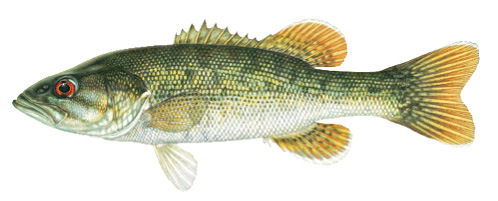
Redeye Bass
- Small tooth patch found on tongue
- Sides olive to brown in coloring; dark vertical bars; prominent dark spot on the gill cover
- White margin on tail
- State Record 3 lb. 7 oz.
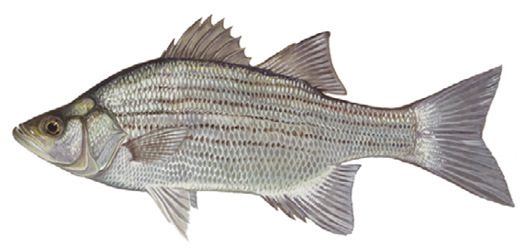
White Bass
- Seldom exceeds 3 pounds
- Tongue with one tooth patch
- Stripes often faint
- 2nd anal spine 2⁄3 or more the length of 3rd anal spine
- State Record 5 lb. 1 oz.
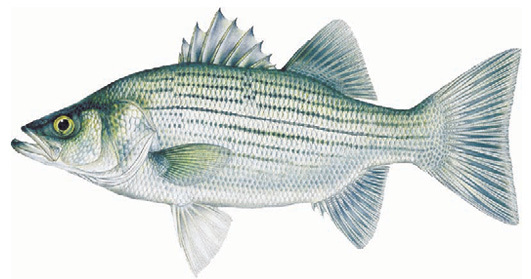
Hybrid White-Striped Bass
- Back arched, body deep
- Stripes distinct and usually broken
- Tongue with two tooth patches
- 2nd anal spine 2⁄3 or more the length of 3rd anal spine
- State Record 25 lb. 8 oz.
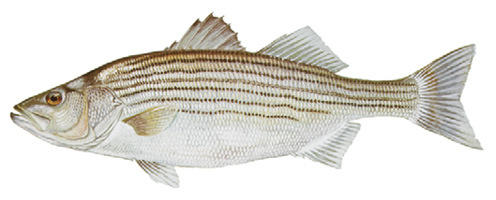
Striped Bass
- Body slender
- Stripes distinct, occasionally broken
- Tongue with two tooth patches
- 2nd anal spine ½ or less the length of 3rd anal spine
- State Record 63 lb.
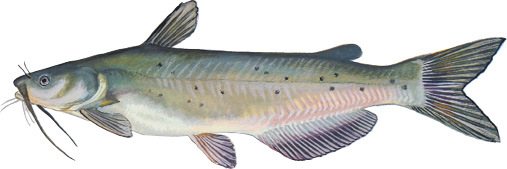
Channel Catfish
- Numerous small, black spots present
- Deeply forked tail fin
- State Record 44 lb. 12 oz.

Flathead Catfish
- Head wide and flat
- Body dark in color
- Tail not forked
- State Record 83 lb.

Walleye
- Sharp teeth
- No spots on dorsal fin
- Dark area at base of dorsal fin
- White spot at bottom of tail
- State Record 14 lb. 2 oz.
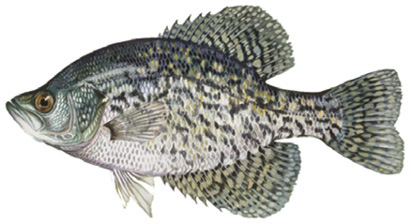
Black Crappie
- 7–8 dorsal spines
- Body color pattern irregular arranged spots
- State Record 4 lb. 4 oz.
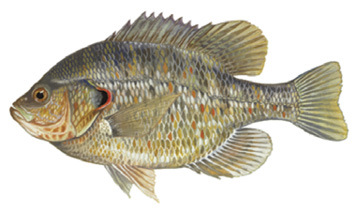
Redear Sunfish (Shellcracker)
- Red edge on operculum ear flap
- Spotted body
- State Record 4 lb. 2 oz.
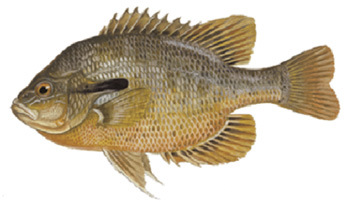
Redbreast Sunfish
- Long, dark ear flap
- Blue lines on head
- Ear flap (operculum) not wider than eye
- State Record 1 lb. 11 oz.

Bluegill
- Black spot on soft dorsal fin
- Vertical bars on body
- State Record 3 lb. 5 oz.
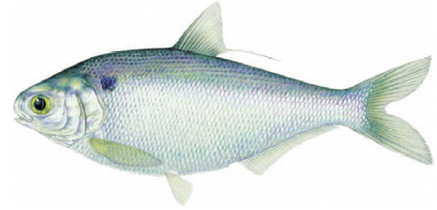
Gizzard Shad
- Mouth below end of snout
- Elongated dorsal fin ray
- Deep body
- Blunt snout
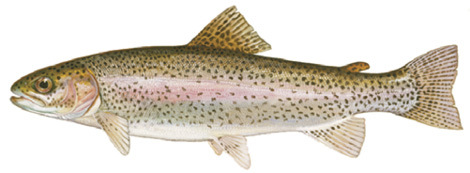
Rainbow Trout
- Small black dots throughout the body that extend into the tail
- Red stripe along side on silvery body
- State Record 17 lb. 8 oz.
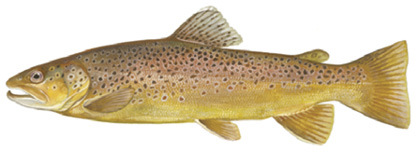
Brown Trout
- Black and red-orange spots inside light circles on brown body
- Caudal fin (tail) square
- State Record 18 lb. 6 oz.
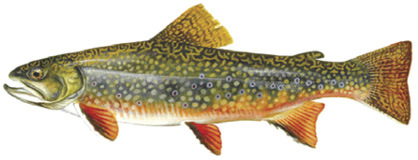
Brook Trout
- Light, wormlike markings on dark upper body
- White leading edge on lower fins (pectoral, pelvic and anal)
- State Record 5 lb. 10 oz.

Chain Pickerel (Jackfish)
- Elongated body with chain-like markings
- Sharp needle-like teeth
- World Record 9 lb. 6 oz.
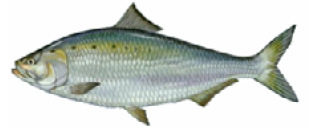
American Shad
- Bluish or green above with a silvery side
- Deeply forked tail
- State Record 8 lb. 3 oz.
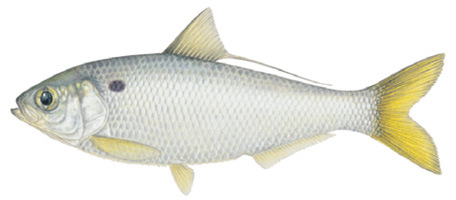
Threadfin Shad
- Mouth at end of snout
- Elongated dorsal fin ray
- Pointed snout
- Yellow tail fin
Fish identification pictures: Duane Raver or © Joseph Tomelleri
Protected Species May Be Encountered While Fishing
It is unlawful to capture, kill, or harm any protected species. If you accidentally capture a protected species while fishing or collecting bait, please release it unharmed immediately.
There are 58 fish, 10 salamanders, one frog, one snail, 27 mussels, 20 crayfish and 14 turtles under protection in Georgia.
Exception: all native crayfish, including state protected species, can be used as bait as long as they are not harvested from burrows. Bait species should never be transferred between water ways.
For more information contact DNR’s Wildlife Conservation Section at (706) 557-3213.
Search the rare species data portal for a list of protected species in your watershed at our website.
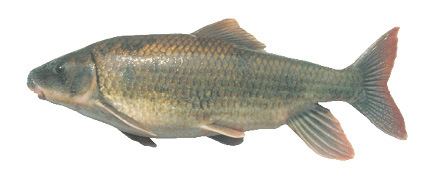
Redhorse Sucker
There are several protected species of redhorse suckers that can easily be confused with common carp while bow fishing. For more information on sport fish and carp identification, please visit GeorgiaWildlife.com/fishing/identification.
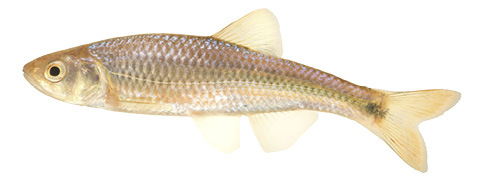
Altamaha Shiner
A state protected minnow that is common in rocky sections of large rivers and streams in the Oconee and Ocmulgee river systems.
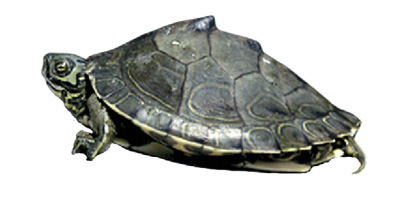
Map Turtle
Aquatic turtle with prominent spiny keel on midline of shell. Found in large streams, rivers in northwest and southwest portions of state.
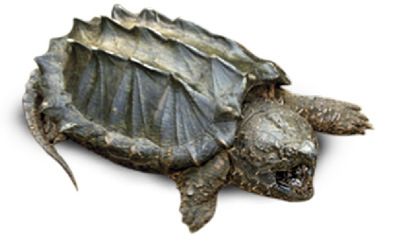
Alligator Snapping Turtle
Huge aquatic turtle that may weigh more than 100 lbs. Occurs in large streams, rivers, reservoirs in the southwest corner of the state. Jaws are powerful—keep a safe distance!
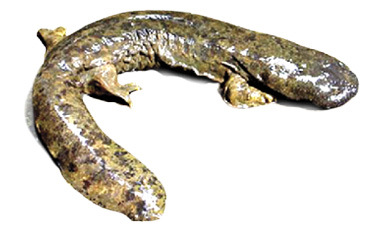
Eastern Hellbender
Large, harmless salamander found in clear, rocky mountain streams such as trout streams.
Up to 29” in length, 11–20” typical

